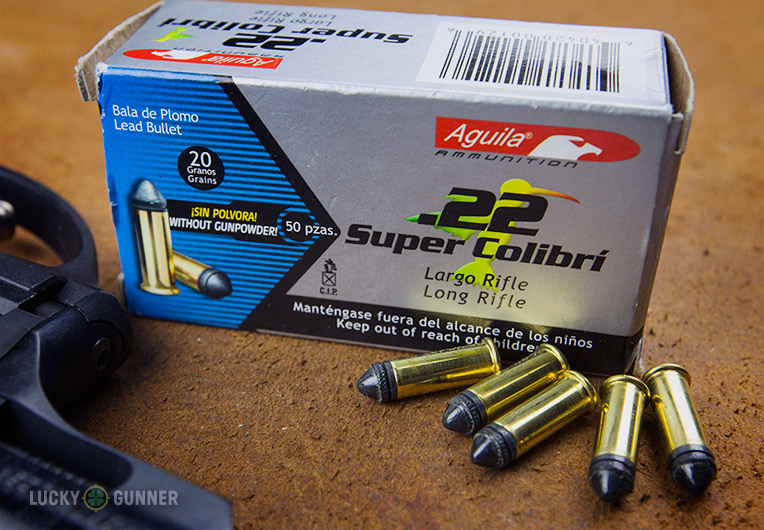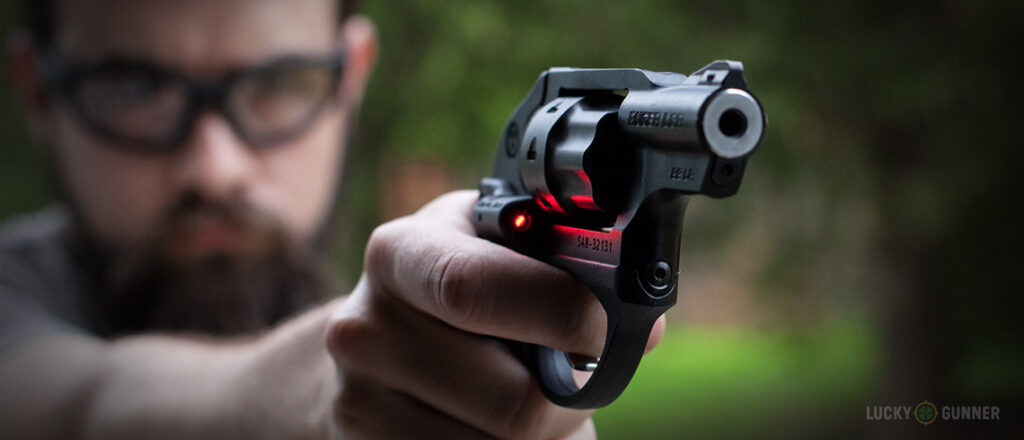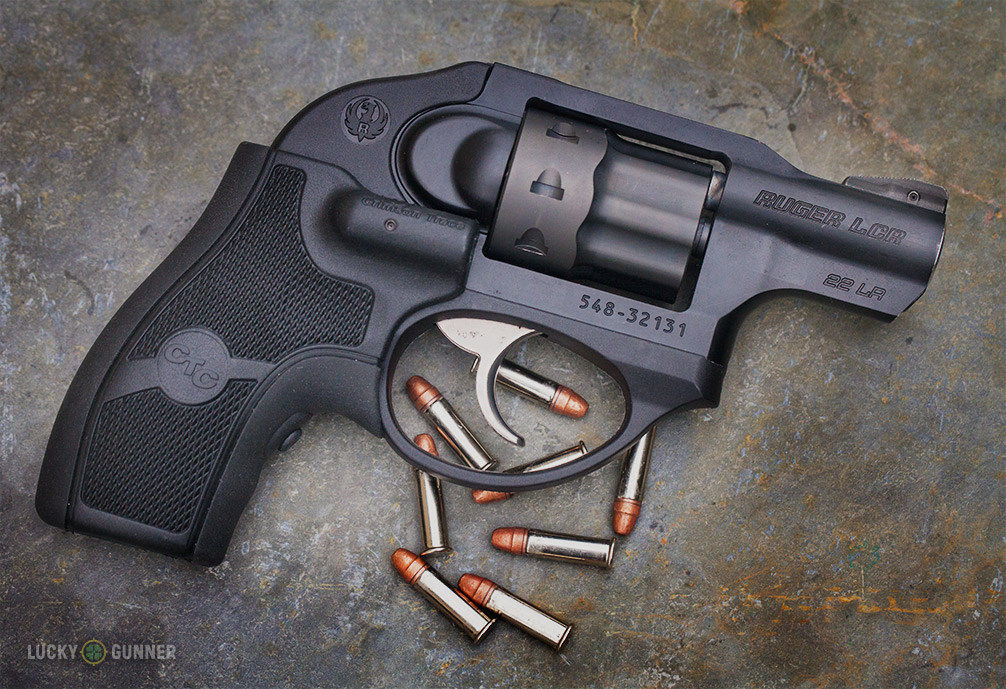Ruger released the .22LR version of their popular LCR revolver back in 2012 without a whole lot of fanfare. By that time, the original .38 special and .357 magnum versions of the LCR already had their day in the spotlight, and it doesn’t exactly make headline news when an existing revolver is re-chambered in a caliber that’s less than ideal for self-defense. But I’m a sucker for fun wheel guns, and when I saw the Ruger LCR-22 with Crimson Trace grips on sale, I jumped on it.
Deleted Scenes
I had lots of other stuff to say about the LCR-22 that didn’t make it into the video. So for you scholars out there who prefer reading to watching videos, here are a few additional thoughts. And for you non-bookish types, there are some pretty pictures, too.
Tested Ammunition
I used a variety of .22 LR loads for the LCR-22 review, and they all functioned perfectly with no misfires, light strikes, or extraction issues. The tested loads included Wolf Match Target, CCI Mini-Mags, CCI Standard Velocity, Federal Champion LRN, American Eagle LRN, and Aguila Super Colibri.
I skipped the “proper” bench-rest accuracy testing this time around, since there hardly seems to be any point with a sub-2-inch-barreled snubby sporting a 15+ lbs. trigger. However, I did try several slow fire shots standing from 10 yards, and easily kept the groups under 2″ with every load except the Colibri. Point of impact changed slightly from one brand to the next, but all showed consistent performance.

If you’re not familiar with Aguila’s Colibri and Super Colibri ammo, they are basically under-powered loads in a shortened .22 LR case intended for practice without all the noise of the full power loads. They have no gunpowder/propellant, and push out the bullet through the blast of the primer alone. It’s an interesting product, but the low power of the loads has some down sides. Neither version creates enough pressure to cycle a semi-auto firearm, and even if they did, most handguns and rifles would not feed the shortened cases reliably. Some magazine fed bolt-action rifles also have trouble cycling the cartridges. In addition, the standard Colibri version may not even give the bullets enough velocity to make it out of a rifle barrel, so they’re limited to use in handguns only. The Super Colibri uses a bit more of the primer compound, making them safe to use in rifles, but they’re also louder than the standard Colibri loads.
But revolvers like the Ruger LCR-22 don’t care either way. Without dependence on feeding or cycling, they’ll run Colibri and Super Colibri ammo just as reliably as anything. Same goes for .22 Short, .22 Long, and any other odd-ball rat/snake-shot type .22 ammo you can get your hands on. Just don’t go cramming a .22 magnum cartridge in the cylinder, and you’ll be fine.
Why Not .22 Magnum?
Speaking of .22 WMR, I’m sure some of you are wondering why I chose the .22 LR version of the LCR over the one chambered in .22 magnum. The magnum would still be very light on recoil, but many hold it in higher regard as a self-defense load because of its higher velocity. From a rifle barrel, that makes a lot of sense, but out of a handgun, we need to take a closer look at the numbers.
Referring to the excellent information provided by the classy gents at Ballistics By The Inch, there’s a huge disparity in the performance of .22 magnum out of a 18″ barrel versus a 2″ barrel. The four 40 grain loads they tested showed an average velocity of 1923 fps from an 18-inch barrel. Three .22 LR loads using the same bullet weight averaged 647 fps less, which makes a huge difference in terms of real world effectiveness. It’s no wonder that .22 WMR is such a well-respected varmint load.
But then take a look at the data for the same loads out of a 2″ barrel. With so little room to burn its extra powder, the .22 magnum only gives an average 30 fps increase over .22 LR. The Ruger LCR-22 barrel is actually only 1.875″ long, so it would provide even less velocity increase in .22 magnum than the BTI test barrels. The .22 magnum LCR also holds just six rounds instead of eight for .22 LR, which hardly makes the mighty magnum version a good trade-off.


